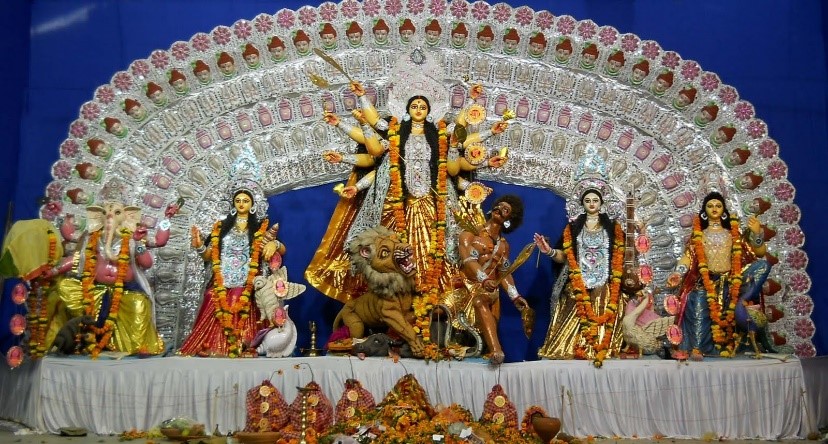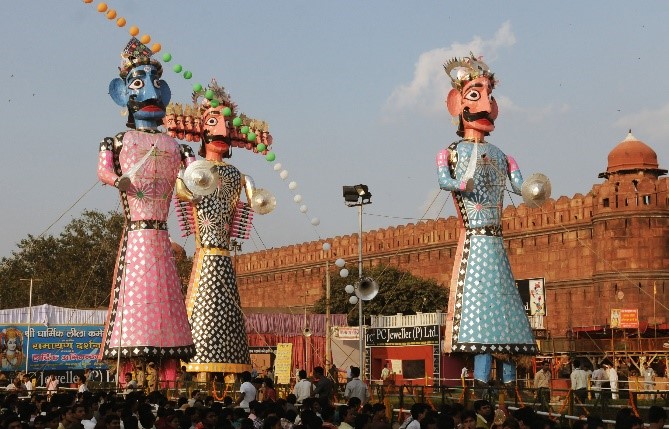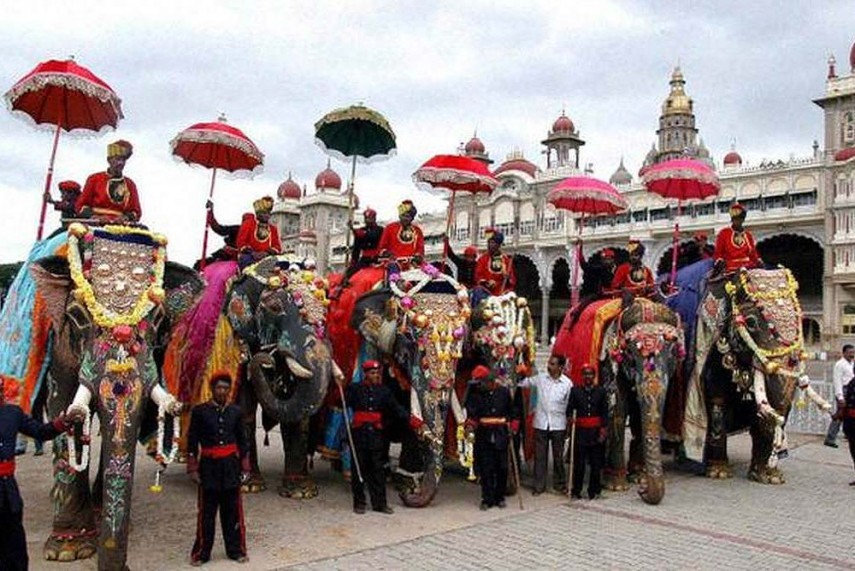Navratri: Different Ways of Celebration in India

The festival of Navratri or Durga pooja marks eternal devotion to the nine forms of Goddess Durga with zeal and festivity associated with it. In India, it is celebrated in diverse cultural hues but the ultimate purpose is to worship the Goddess and to celebrate Rama’s victory over demon Ravana. In another way, it is a victory of virtue over evil. Let’s find out how it is celebrated in different states in India:
West Bengal: The festival is celebrated as Durga pooja that marks the victory of Goddess Durga over demon Mahisasur. Magnificent pandals with huge idols of the Goddess are set up, the bright colorful traditional attires of people, ‘Dhunuchi naach’ and prayers in the evening add liveliness to the ambiance. The eastern states, Assam, Tripura, Odisha, and Jharkhand celebrate the festival almost in the same way.

Uttar Pradesh, Bihar: In these states, the festival is celebrated with the enactment of the Ramayan story ‘Ramleela’ by different artists for nine days that culminates into the war between Rama and Ravana on the tenth day. The huge effigies of Ravana are burnt at different places across the cities and people gather to watch this. Some people keep fastings for nine days and set up an earthen pot ‘Kalash’ in front of Goddess Durga’s idol for nine days.
Rajasthan: Similar to UP and Bihar, in Rajasthan, a large number of people wearing traditional clothes gather to celebrate and to see the burning of the Ravana effigy. Dusshera Mela is organized in different places that go on till Diwali.
Punjab: In Punjab, Haryana, New Delhi, the devotional vibe can be experienced by ‘Jagrata’ where various bhajans, songs are performed by artists. People end their fastings on the eighth or ninth day followed by worshipping and serving food to nine girls and a boy on the final day.
Himachal Pradesh: Here, people celebrate the tenth day as ‘Kullu Dussehra’ as the victory of Rama over Ravana and also carry out a procession of the Goddess Durga’s idol.

Gujrat: Some People in Gujrat keep fastings for nine days, women lit Diya called ‘Garbo’ every evening. The famous ‘Garba-raas’ dance is organized in Pandals in front of the idol of Goddess Durga where festivity reaches its full bloom.
Maharashtra: Similar to Gujrat, people organize ‘Garba’, at various places. Married women offer coconut, kumkum to female relatives and friends, the ritual is called ‘Saumangalyam’.
Andhra Pradesh: The festival is called ‘Batukamma Panduga’ means- Mother Goddess Come Alive. Women wear new clothes, arrange flowers stacks, and offer prayers to the goddess.
Tamilnadu: Along with Durga, goddesses Lakshmi and Saraswathi are also worshipped here during Navratri. The special feature is the display of ‘Kolu’ (dolls) narrating various legends related to Hindu scriptures.

Kerala: In this state, the festival is mainly related to education, known as ‘Vidya aarambham’. people worship Goddess Saraswathi and on the last day, children are encouraged to write letters on rice or sand.
Karnataka: Here, the city of Mysore is famous for the spectacular Mysore Dussehra for hundreds of years. The procession of elephants and horses on Mahanavmi and the procession of goddess Chamundeshwari are worth seeing.